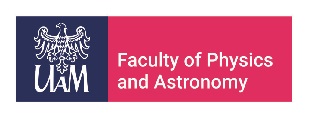| 4. | Jacek Baranowski, Bogusław Mróz, Sławomir Mielcarek, I Iatsunskyi, Aleksandra Trzaskowska High resolution Brillouin spectroscopy of the surface acoustic waves in Sb2Te3 van der Waals single crystals Scientific Reports, 15 (1), pp. 1358, 2025, ISSN: 2045-2322. Abstract | Links | BibTeX @article{Baranowski2025,
title = {High resolution Brillouin spectroscopy of the surface acoustic waves in Sb2Te3 van der Waals single crystals},
author = {Jacek Baranowski and Bogusław Mróz and Sławomir Mielcarek and I Iatsunskyi and Aleksandra Trzaskowska},
url = {https://doi.org/10.1038/s41598-025-85742-4},
doi = {10.1038/s41598-025-85742-4},
issn = {2045-2322},
year = {2025},
date = {2025-01-08},
journal = {Scientific Reports},
volume = {15},
number = {1},
pages = {1358},
abstract = {High-resolution Brillouin spectroscopy was employed to investigate the anisotropy in surface wave velocities within a bulk single crystal of Sb2Te3, a well-known layered van der Waals material. By leveraging the bulk elastic constants derived from various simulation methods, we were able to theoretically calculate the distribution of surface acoustic phonon velocities on the cleavage plane of the material. Upon analyzing multiple simulation results, it became evident that the most significant discrepancies arose in the calculations of the elastic constant c33, with values ranging from 48 to 98 GPa. Consequently, a direct measurement of the c33 elastic constant for Sb2Te3 was attempted. Through our ellipsometry results, we determined both the real and imaginary components of the refractive index, leading to an experimental determination of the c33 elastic constant, which was found to be 47.9 GPa. Additionally the results of the conducted studies enabled the analytical determination of all components of the elastic property tensor of the investigated material.},
keywords = {},
pubstate = {published},
tppubtype = {article}
}
High-resolution Brillouin spectroscopy was employed to investigate the anisotropy in surface wave velocities within a bulk single crystal of Sb2Te3, a well-known layered van der Waals material. By leveraging the bulk elastic constants derived from various simulation methods, we were able to theoretically calculate the distribution of surface acoustic phonon velocities on the cleavage plane of the material. Upon analyzing multiple simulation results, it became evident that the most significant discrepancies arose in the calculations of the elastic constant c33, with values ranging from 48 to 98 GPa. Consequently, a direct measurement of the c33 elastic constant for Sb2Te3 was attempted. Through our ellipsometry results, we determined both the real and imaginary components of the refractive index, leading to an experimental determination of the c33 elastic constant, which was found to be 47.9 GPa. Additionally the results of the conducted studies enabled the analytical determination of all components of the elastic property tensor of the investigated material. |
| 3. | Marceli Kaczmarski, Jacek Jenczyk, Bogusław Mróz Phason and Amplitudon Modes in K3Na(SeO4)2 Crystal Symmetry, 16 (11), 2024, ISSN: 2073-8994. Abstract | Links | BibTeX @article{sym16111482,
title = {Phason and Amplitudon Modes in K3Na(SeO4)2 Crystal},
author = {Marceli Kaczmarski and Jacek Jenczyk and Bogusław Mróz},
url = {https://www.mdpi.com/2073-8994/16/11/1482},
doi = {10.3390/sym16111482},
issn = {2073-8994},
year = {2024},
date = {2024-11-06},
journal = {Symmetry},
volume = {16},
number = {11},
abstract = {For the first time, the Nambu–Goldstone optical mode has been observed in ferroelastic crystals. The amplitudon and phason modes were identified in the Raman spectra of the K3Na(SeO4)2 (KNSe) crystal. We discuss the occurrence of such lattice vibration with regard to the possible presence of an incommensurate (IC) phase. The potential scenario of the dynamics of the SO4 tetrahedron leading to the appearance of an IC phase, accompanied by critical temperature behavior of two external vibrations of Ag symmetry, is given together with the molecular mechanism of the phase transitions in the material studied. The effect of the spatial reorganization of the crystal lattice associated with the ferroelastic domains of the KNSe crystal of W and W′ types is also discussed. We show that the emergence of such a domain structure may also be a source of incommensurability.},
keywords = {},
pubstate = {published},
tppubtype = {article}
}
For the first time, the Nambu–Goldstone optical mode has been observed in ferroelastic crystals. The amplitudon and phason modes were identified in the Raman spectra of the K3Na(SeO4)2 (KNSe) crystal. We discuss the occurrence of such lattice vibration with regard to the possible presence of an incommensurate (IC) phase. The potential scenario of the dynamics of the SO4 tetrahedron leading to the appearance of an IC phase, accompanied by critical temperature behavior of two external vibrations of Ag symmetry, is given together with the molecular mechanism of the phase transitions in the material studied. The effect of the spatial reorganization of the crystal lattice associated with the ferroelastic domains of the KNSe crystal of W and W′ types is also discussed. We show that the emergence of such a domain structure may also be a source of incommensurability. |
| 2. | D Kiphart, Y Harkavyi, K Balin, J Szade, Bogusław Mróz, P Kuświk, S Jurga, M Wiesner Investigations of proximity-induced superconductivity in the topological insulator Bi2Te3 by microRaman spectroscopy Scientific Reports, 11 (1), pp. 22980, 2021, ISSN: 2045-2322. Abstract | Links | BibTeX @article{kiphart_investigations_2021,
title = {Investigations of proximity-induced superconductivity in the topological insulator Bi2Te3 by microRaman spectroscopy},
author = {D Kiphart and Y Harkavyi and K Balin and J Szade and Bogusław Mróz and P Kuświk and S Jurga and M Wiesner},
url = {https://www.nature.com/articles/s41598-021-02475-w},
doi = {10.1038/s41598-021-02475-w},
issn = {2045-2322},
year = {2021},
date = {2021-11-26},
journal = {Scientific Reports},
volume = {11},
number = {1},
pages = {22980},
abstract = {We used the topological insulator (TI) Bi2Te3 and a high-temperature superconductor (HTSC) hybrid device for investigations of proximity-induced superconductivity (PS) in the TI. Application of the superconductor YBa2Cu3O7-δ (YBCO) enabled us to access higher temperature and energy scales for this phenomenon. The HTSC in the hybrid device exhibits emergence of a pseudogap state for T textgreater Tc that converts into a superconducting state with a reduced gap for T textless Tc. The conversion process has been reflected in Raman spectra collected from the TI. Complementary charge transport experiments revealed emergence of the proximity-induced superconducting gap in the TI and the reduced superconducting gap in the HTSC, but no signature of the pseudogap. This allowed us to conclude that Raman spectroscopy reveals formation of the pseudogap state but cannot distinguish the proximity-induced superconducting state in the TI from the superconducting state in the HTSC characterised by the reduced gap. Results of our experiments have shown that Raman spectroscopy is a complementary technique to classic charge transport experiments and is a powerful tool for investigation of the proximity-induced superconductivity in the Bi2Te3.},
keywords = {},
pubstate = {published},
tppubtype = {article}
}
We used the topological insulator (TI) Bi2Te3 and a high-temperature superconductor (HTSC) hybrid device for investigations of proximity-induced superconductivity (PS) in the TI. Application of the superconductor YBa2Cu3O7-δ (YBCO) enabled us to access higher temperature and energy scales for this phenomenon. The HTSC in the hybrid device exhibits emergence of a pseudogap state for T textgreater Tc that converts into a superconducting state with a reduced gap for T textless Tc. The conversion process has been reflected in Raman spectra collected from the TI. Complementary charge transport experiments revealed emergence of the proximity-induced superconducting gap in the TI and the reduced superconducting gap in the HTSC, but no signature of the pseudogap. This allowed us to conclude that Raman spectroscopy reveals formation of the pseudogap state but cannot distinguish the proximity-induced superconducting state in the TI from the superconducting state in the HTSC characterised by the reduced gap. Results of our experiments have shown that Raman spectroscopy is a complementary technique to classic charge transport experiments and is a powerful tool for investigation of the proximity-induced superconductivity in the Bi2Te3. |
| 1. | Aleksandra Trzaskowska, Sławomir Mielcarek, M Wiesner, F Lombardi, Bogusław Mróz Dispersion of the surface phonons in semiconductor/topological insulator Si/Bi2Te3 heterostructure studied by high resolution Brillouin spectroscopy Ultrasonics, 117 , pp. 106526, 2021. Abstract | Links | BibTeX @article{TRZASKOWSKA2021106526,
title = {Dispersion of the surface phonons in semiconductor/topological insulator Si/Bi2Te3 heterostructure studied by high resolution Brillouin spectroscopy},
author = {Aleksandra Trzaskowska and Sławomir Mielcarek and M Wiesner and F Lombardi and Bogusław Mróz},
url = {https://www.sciencedirect.com/science/article/pii/S0041624X21001554},
doi = {https://doi.org/10.1016/j.ultras.2021.106526},
year = {2021},
date = {2021-07-21},
journal = {Ultrasonics},
volume = {117},
pages = {106526},
abstract = {The dynamics and dispersion of surface phonons in heterostructure semiconductor/ topological insulator Si/Bi2Te3 was investigated using high resolution Brillouin light scattering method in the GHz frequency range. Both Rayleigh and Sezawa surface acoustic waves have been observed for wave vectors ranging from 0.006 to 0.023 nm−1. Anomaly in dispersion relations ω(q) for both surface waves were detected for the wave vector q = 0.016 nm−1. The finite element method (FEM) was used to simulate the observed shapes of ω(q) and to find the deformation profiles of surface acoustic waves. We attribute the observed changes to the coupling between low energy electrons and surface phonons. The coupling between helical Dirac states and surface phonons is discussed in the frame of accessible theoretical models.},
keywords = {},
pubstate = {published},
tppubtype = {article}
}
The dynamics and dispersion of surface phonons in heterostructure semiconductor/ topological insulator Si/Bi2Te3 was investigated using high resolution Brillouin light scattering method in the GHz frequency range. Both Rayleigh and Sezawa surface acoustic waves have been observed for wave vectors ranging from 0.006 to 0.023 nm−1. Anomaly in dispersion relations ω(q) for both surface waves were detected for the wave vector q = 0.016 nm−1. The finite element method (FEM) was used to simulate the observed shapes of ω(q) and to find the deformation profiles of surface acoustic waves. We attribute the observed changes to the coupling between low energy electrons and surface phonons. The coupling between helical Dirac states and surface phonons is discussed in the frame of accessible theoretical models. |


